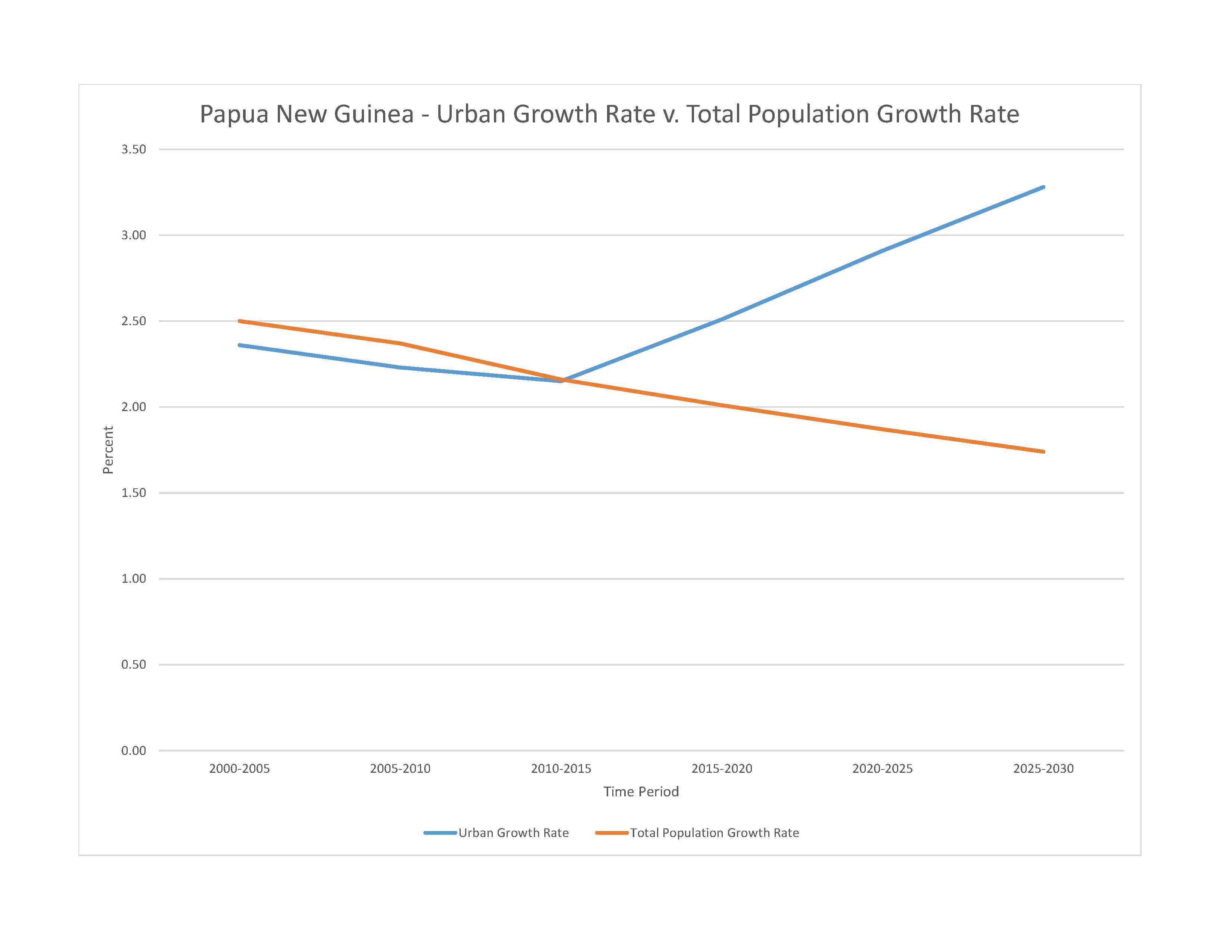
9,819,350 (2023 est.)
noun: Papua New Guinean(s)
adjective: Papua New Guinean
Melanesian, Papuan, Negrito, Micronesian, Polynesian
Tok Pisin (official), English (official), Hiri Motu (official), some 839 living indigenous languages are spoken (about 12% of the world's total); many languages have fewer than 1,000 speakers
note: Tok Pisin, a creole language, is widely used and understood; English is spoken by 1%-2%; Hiri Motu is spoken by less than 2%
Protestant 64.3% (Evangelical Lutheran 18.4%, Seventh Day Adventist 12.9%, Pentecostal 10.4%, United Church 10.3%, Evangelical Alliance 5.9%, Anglican 3.2%, Baptist 2.8%, Salvation Army 0.4%), Roman Catholic 26%, other Christian 5.3%, non-Christian 1.4%, unspecified 3.1% (2011 est.)
note: data represent only the citizen population; roughly 0.3% of the population are non-citizens, consisting of Christian 52% (predominantly Roman Catholic), other 10.7% , none 37.3%
0-14 years: 37.34% (male 1,871,227/female 1,795,700)
15-64 years: 58.75% (male 2,917,668/female 2,851,691)
65 years and over: 3.9% (2023 est.) (male 189,851/female 193,213)
total dependency ratio: 60.5
youth dependency ratio: 55.5
elderly dependency ratio: 5
potential support ratio: 20.1 (2021 est.)
total: 21.6 years (2023 est.)
male: 21.4 years
female: 21.8 years
2.31% (2023 est.)
28.5 births/1,000 population (2023 est.)
5.5 deaths/1,000 population (2023 est.)
0 migrant(s)/1,000 population (2023 est.)
population concentrated in the highlands and eastern coastal areas on the island of New Guinea; predominantly a rural distribution with only about one-fifth of the population residing in urban areas
urban population: 13.7% of total population (2023)
rate of urbanization: 2.91% annual rate of change (2020-25 est.)

410,000 PORT MORESBY (capital) (2023)
at birth: 1.05 male(s)/female
0-14 years: 1.04 male(s)/female
15-64 years: 1.02 male(s)/female
65 years and over: 0.98 male(s)/female
total population: 1.03 male(s)/female (2023 est.)
21.9 years (2016/18)
note: data represents median age a first birth among women 25-49
192 deaths/100,000 live births (2020 est.)
total: 32.8 deaths/1,000 live births (2023 est.)
male: 36.1 deaths/1,000 live births
female: 29.3 deaths/1,000 live births
total population: 69.7 years (2023 est.)
male: 68 years
female: 71.5 years
3.85 children born/woman (2023 est.)
1.88 (2023 est.)
36.7% (2016/18)
improved: urban: 86.2% of population
rural: 41.5% of population
total: 47.5% of population
unimproved: urban: 13.8% of population
rural: 58.5% of population
total: 52.5% of population (2020 est.)
2.5% of GDP (2020)
0.07 physicians/1,000 population (2019)
improved: urban: 57.8% of population
rural: 18.2% of population
total: 23.5% of population
unimproved: urban: 42.2% of population
rural: 81.8% of population
total: 76.5% of population (2020 est.)
degree of risk: very high (2023)
food or waterborne diseases: bacterial diarrhea, hepatitis A, and typhoid fever
vectorborne diseases: dengue fever, malaria, and sexually transmitted diseases: hepatitis B (2024)
21.3% (2016)
total: 1.26 liters of pure alcohol (2019 est.)
beer: 0.6 liters of pure alcohol (2019 est.)
wine: 0.06 liters of pure alcohol (2019 est.)
spirits: 0.6 liters of pure alcohol (2019 est.)
other alcohols: 0 liters of pure alcohol (2019 est.)
total: 39.3% (2020 est.)
male: 53.5% (2020 est.)
female: 25.1% (2020 est.)
65.5% (2023 est.)
women married by age 15: 8%
women married by age 18: 27.3%
men married by age 18: 3.7% (2018 est.)
1.4% of GDP (2020 est.)
definition: age 15 and over can read and write
total population: 64.2%
male: 65.6%
female: 62.8% (2015)
the indigenous population of Papua New Guinea (PNG) is one of the most heterogeneous in the world; PNG has several thousand separate communities, most with only a few hundred people; divided by language, customs, and tradition, some of these communities have engaged in low-scale tribal conflict with their neighbors for millennia; the advent of modern weapons and modern migrants into urban areas has greatly magnified the impact of this lawlessness
NOTE: The information regarding Papua New Guinea on this page is re-published from the 2024 World Fact Book of the United States Central Intelligence Agency and other sources. No claims are made regarding the accuracy of Papua New Guinea 2024 information contained here. All suggestions for corrections of any errors about Papua New Guinea 2024 should be addressed to the CIA or the source cited on each page.
This page was last modified 04 May 24, Copyright © 2024 ITA all rights reserved.